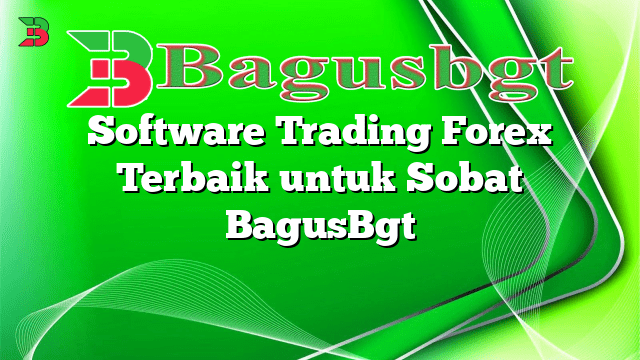Hello and welcome to our in-depth guide on trading forex strategy. In this article, we will explore various strategies used by traders in the forex market to maximize their profits and minimize risks. Whether you are a beginner or an experienced trader, this article will provide you with valuable insights into the world of forex trading.
1. Trend Following Strategy
The trend following strategy is one of the most popular strategies used by forex traders. It involves identifying the direction of the market trend and trading in the same direction. Traders use technical indicators such as moving averages and trend lines to determine the trend and enter trades accordingly. The main advantage of this strategy is that it allows traders to ride the trend and potentially make significant profits. However, the downside is that it may result in missed opportunities if the market suddenly reverses.
2. Breakout Strategy
The breakout strategy involves identifying key levels of support and resistance and entering trades when the price breaks out of these levels. Traders use various methods to identify breakouts, such as chart patterns, trend lines, and volatility indicators. The advantage of this strategy is that it allows traders to catch big moves in the market. However, the downside is that false breakouts can occur, leading to losses if trades are entered prematurely.
3. Scalping Strategy
The scalping strategy is a short-term trading strategy that aims to profit from small price movements. Traders who use this strategy enter and exit trades within minutes or even seconds. Scalpers rely on technical indicators such as moving averages and oscillators to identify entry and exit points. The advantage of this strategy is that it allows for quick profits, but the downside is that it requires intense focus and discipline.
4. Carry Trade Strategy
The carry trade strategy involves borrowing a currency with a low-interest rate and using the funds to buy a currency with a high-interest rate. Traders profit from the interest rate differential between the two currencies. The advantage of this strategy is that it can generate consistent profits over time. However, the downside is that it is exposed to currency exchange rate fluctuations and can result in losses if the market moves against the trade.
5. Range Trading Strategy
The range trading strategy is used when the market is in a consolidation phase, with the price oscillating between support and resistance levels. Traders identify these levels and enter trades when the price reaches the support or resistance level. The advantage of this strategy is that it allows traders to profit from the market’s lack of direction. However, the downside is that false breakouts can occur, resulting in losses if trades are entered prematurely.
6. News Trading Strategy
The news trading strategy involves trading based on economic news releases and their impact on the forex market. Traders analyze economic indicators and enter trades based on the expected market reaction. The advantage of this strategy is that it can generate significant profits in a short period. However, the downside is that it requires quick decision-making and can result in losses if the market reacts differently than anticipated.
7. Hedging Strategy
The hedging strategy is used to protect against potential losses in the forex market. Traders open a position in the opposite direction of their existing trade to offset any potential losses. The advantage of this strategy is that it provides insurance against adverse market movements. However, the downside is that it can limit potential profits if the market moves in the trader’s favor.
8. Fibonacci Retracement Strategy
The Fibonacci retracement strategy is based on the idea that markets tend to retrace a portion of their previous move before continuing in the same direction. Traders use Fibonacci retracement levels to identify potential entry and exit points. The advantage of this strategy is that it allows traders to enter trades at favorable price levels. However, the downside is that it requires accurate analysis and can result in losses if the retracement levels are incorrectly identified.
9. Martingale Strategy
The Martingale strategy is a high-risk strategy that involves doubling the position size after each loss. Traders who use this strategy believe that eventually, a winning trade will occur, which will recover all previous losses. The advantage of this strategy is that it can quickly recover losses and generate profits. However, the downside is that it requires a large trading account and can lead to significant losses if the losing streak continues.
10. Price Action Strategy
The price action strategy is based on the analysis of raw price movement without the use of indicators. Traders who use this strategy rely on candlestick patterns, chart patterns, and support and resistance levels to make trading decisions. The advantage of this strategy is that it provides a clear and uncluttered view of the market. However, the downside is that it requires experience and skill to accurately interpret price action signals.
In addition to the strategies mentioned above, there are other trading forex strategies that traders can explore:
1. Mean Reversion Strategy
The mean reversion strategy involves trading based on the assumption that prices will eventually revert to their mean or average. Traders identify overbought or oversold conditions and enter trades in the opposite direction, expecting the price to reverse. The advantage of this strategy is that it can generate profits during periods of market consolidation. However, the downside is that it requires accurate timing and can result in losses if the market continues to move in the same direction.
2. Algorithmic Trading Strategy
The algorithmic trading strategy involves using computer programs or algorithms to execute trades automatically based on predefined rules and conditions. Traders can develop their own algorithms or use existing ones. The advantage of this strategy is that it eliminates human emotions and allows for faster execution of trades. However, the downside is that it requires advanced programming skills and continuous monitoring of the algorithms.
3. Swing Trading Strategy
The swing trading strategy involves capturing short to medium-term price movements within an established trend. Traders identify swing highs and swing lows and enter trades when the price retraces to these levels. The advantage of this strategy is that it allows traders to capture larger price movements compared to day trading. However, the downside is that it requires patience and discipline to hold positions for several days or weeks.
4. Position Trading Strategy
The position trading strategy involves holding positions for an extended period, ranging from weeks to months or even years. Traders who use this strategy focus on long-term trends and economic fundamentals. The advantage of this strategy is that it requires less time and effort compared to other strategies. However, the downside is that it requires a high level of patience and can result in missed trading opportunities.
Conclusion
In conclusion, trading forex strategy plays a crucial role in achieving success in the forex market. Each strategy has its own advantages and disadvantages, and it is essential for traders to choose the strategy that aligns with their trading style, risk tolerance, and goals. By understanding and implementing various trading strategies, traders can increase their chances of profitability and navigate the dynamic and volatile forex market more effectively.
 Bagus Banget Kumpulan Informasi terbaru dari berbagai sumber yang terpercaya
Bagus Banget Kumpulan Informasi terbaru dari berbagai sumber yang terpercaya


